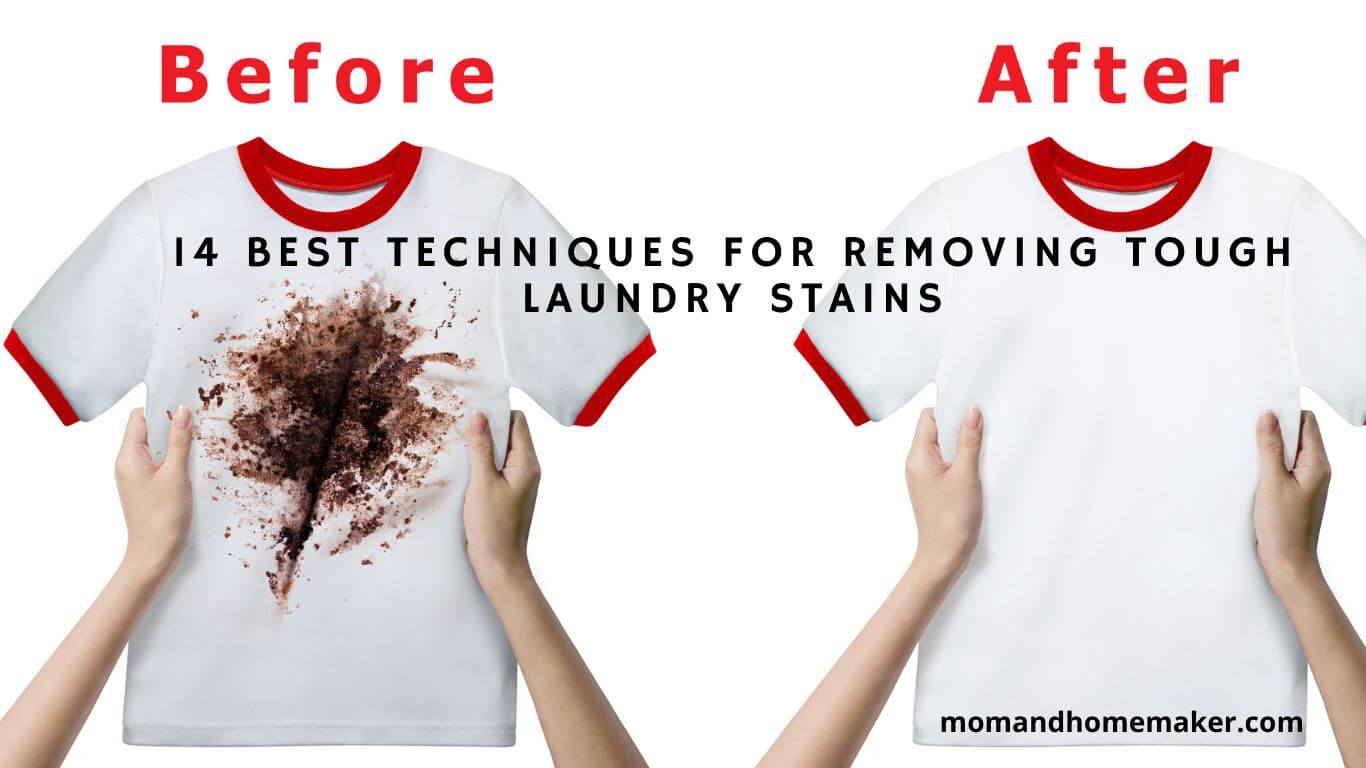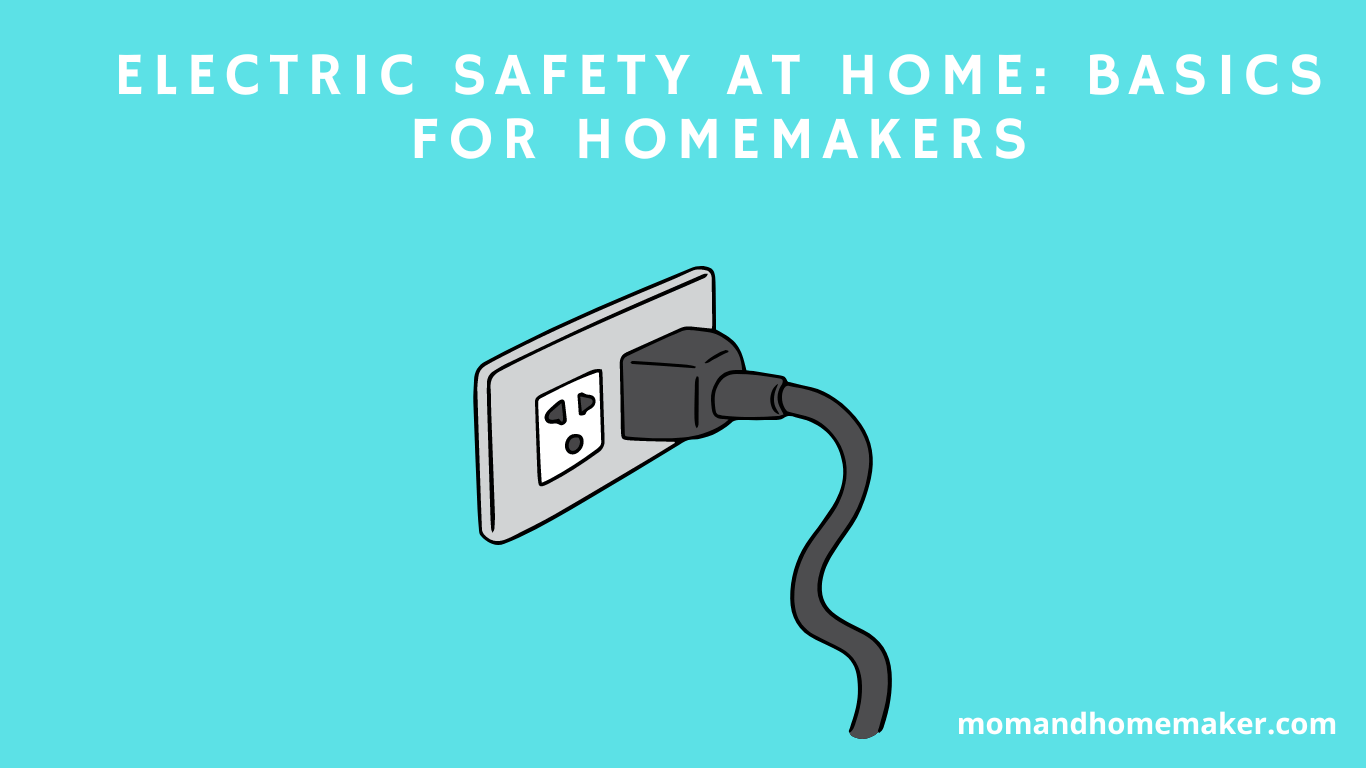When it comes to doing laundry, you know that stains can be stubborn and frustrating. You’ve tried all the traditional methods, but those tough stains still seem to linger, mocking your efforts.
In this discussion, the best techniques for removing those pesky laundry stains will be revealed. From pre-treating with detergent to using unexpected household items like vinegar and hydrogen peroxide, these tried and tested methods might just be the solution you’ve been searching for.

Pre-Treat Stains With Detergent
To effectively remove tough laundry stains, start by pre-treating them with detergent. Pre-treating techniques are essential for effective stain removal, ensuring that stubborn marks don’t ruin your favorite clothes.
When faced with a tough stain, first dampen the area with water. Then, apply a small amount of liquid detergent directly to the stain. Gently rub the fabric together to create a lather, allowing the detergent to penetrate the fibers and break down the stain. Let it sit for a few minutes to work its magic.
Always check the care label on your garment to ensure the detergent is safe to use. After pre-treating, simply launder your clothing as usual. This pre-treating technique, along with effective stain-removal methods, will help you banish stubborn stains and keep your clothes looking fresh and clean.
Use Vinegar for Odor Removal
For effective odor removal, consider using vinegar as a natural and cost-effective solution. Vinegar has many benefits when it comes to eliminating unpleasant smells from your laundry. It’s readily available in most households and safe to use on a variety of fabrics.
When you add vinegar to your regular laundry detergent, it helps break down and neutralize odor-causing bacteria, leaving your clothes smelling fresh and clean.
One of the main benefits of using vinegar for odor removal is that it eliminates stubborn smells without harsh chemicals. Vinegar is a natural alternative that’s gentle on your clothes and the environment. It’s also an affordable option, making it a budget-friendly choice for those looking to save money.
If you prefer alternatives to vinegar, you can consider using baking soda. Baking soda is another natural ingredient known for its odor-neutralizing properties. Simply add a cup of baking soda to your laundry along with your regular detergent to help eliminate unwanted smells.
Another option is to use essential oils like lavender or lemon to add a pleasant fragrance to your laundry.
Apply Hydrogen Peroxide on Tough Stains
When dealing with tough stains, using hydrogen peroxide is a highly effective technique. It not only removes stains effectively but also serves as a natural alternative to harsh chemicals. Here’s why hydrogen peroxide should be your go-to stain remover:
- Gentle on fabrics: Unlike some chemical stain removers, hydrogen peroxide is gentle on fabrics, making it suitable for various materials.
- Versatile: Hydrogen peroxide can remove a wide range of stains, including blood, wine, grass, and ink. It’s a versatile solution that should be a staple in any laundry room.
- Odor removal: In addition to removing stains, hydrogen peroxide helps eliminate odors, leaving your clothes smelling fresh and clean.
- Cost-effective: Hydrogen peroxide is affordable and readily available compared to other stain removers on the market. It’s a budget-friendly option for stain removal.
While hydrogen peroxide is an excellent choice for tough stains, you can also try other natural stain removers like lemon juice, baking soda, or white vinegar. Experiment with different options to find the one that works best for you.
Try Baking Soda for Grease Stains
Looking to remove those tough grease stains? Baking soda is your solution. Baking soda, a pantry staple, effectively eliminates grease stains from clothes. Its alkaline nature breaks down and lifts the grease, making it easier to wash away. Plus, it’s a safe and eco-friendly alternative to harsh chemicals.
To use baking soda for grease stains, follow these steps:
- Blot the stain with a cloth or paper towel to remove excess oil.
- Sprinkle baking soda generously over the stain, covering it completely.
- Gently rub the baking soda into the fabric using your fingers or a soft brush. Let it sit for 30 minutes to an hour.
- Shake off the excess baking soda and launder the garment as usual.
Use Lemon Juice for Fruit Stains
To remove fruit stains effectively, lemon juice can be used as a natural and effective solution. Lemon juice has several benefits that make it an excellent choice for tackling stubborn fruit stains. Here’s why lemon juice is a great alternative fruit stain remover:
- Natural bleaching properties: Lemon juice contains citric acid, which acts as a natural bleach and helps lighten and remove fruit stains from fabrics.
- Antibacterial properties: Lemon juice has antimicrobial properties that can help eliminate any lingering odors caused by fruit stains.
- Gentle on fabrics: Lemon juice is gentle on fabrics and less likely to cause damage or discoloration compared to harsh chemical stain removers.
- Eco-friendly option: Using lemon juice as a fruit stain remover is an environmentally friendly choice since it doesn’t contain harmful chemicals that can harm the environment.
Remove Blood Stains With Cold Water
To remove blood stains using cold water, it’s important to understand its effectiveness, pre-treatment options, and drying techniques. Cold water is effective in removing blood stains because it helps prevent the stain from setting.
Before washing with cold water, you can treat the stain with enzyme-based stain removers or a mixture of cold water and salt. After washing, make sure to air dry the garment to avoid setting the stain further.
Cold Water Effectiveness
Using cold water is an effective way to remove blood stains from laundry. Cold water has numerous benefits that make it an excellent choice for stain removal. Here’s why cold water is so effective:
- Gentle on fabrics: Cold water is less likely to damage or fade your clothes, keeping them looking fresh and vibrant for longer.
- Prevents setting the stain: Heat can cause blood stains to become more difficult to remove as it coagulates the proteins in the blood and sets them into the fabric. Cold water prevents this from happening.
- Preserve color: Cold water helps maintain the original shade of your garments, ensuring they stay true to their colors.
- Environmentally friendly: Using cold water saves energy and reduces your carbon footprint, making it a more sustainable choice.
Pre-Treatment Options
Pre-Treatment Options
To effectively remove blood stains using cold water, consider pre-treatment options. Pre-treatment techniques are important stain removal methods that can help you remove tough stains more effectively.
When dealing with blood stains, acting quickly is crucial. Start by rinsing the stained area with cold water. This will help dilute the blood and prevent it from settling into the fabric. Gently blot the stain with a clean cloth or paper towel to remove any excess blood. Avoid rubbing the stain, as it can spread the blood further and make the stain harder to remove.
Once you’ve pre-treated the stain with cold water, you can proceed with your regular laundry routine to fully remove the blood stain.
Drying Techniques
After treating the blood stain with cold water, it’s time to focus on drying techniques to effectively remove the stain.
Here are some techniques that will help you prevent color fading and keep your laundry looking fresh and vibrant:
- Air-drying: Hang your clothes outside in the fresh air and sunlight. This method not only helps dry your clothes naturally but also removes any lingering odor.
- Machine drying with low heat: If you prefer using a dryer, set it to a low heat setting. High heat can cause colors to fade and damage delicate fabrics.
- Using dryer balls: Adding a few dryer balls reduces drying time and prevents clothes from sticking together, making the drying process more efficient.
- Avoiding over-drying: Remove your clothes from the dryer when slightly damp. Over-drying can cause wrinkles and make it harder to remove any remaining stains.
Use Club Soda for Red Wine Stains
One effective way to remove red wine stains is by using club soda. The carbonation in club soda helps lift the stain from the fabric, making it easier to get rid of.
Simply dab the stain with a clean cloth soaked in club soda, then wash the garment as usual.
Club Soda Method
To effectively remove red wine stains, try using club soda. Club soda isn’t only a refreshing drink but also a powerful stain remover. Here’s why it works:
- Other uses of club soda for cleaning:
- It can remove grease stains from clothes and furniture.
- It can clean tarnished silverware and stainless steel appliances.
- It can freshen up carpets and rugs by eliminating odors.
- It can even revitalize drooping plants by providing them with essential minerals.
The effectiveness of club soda in removing stains lies in its carbonation. The bubbles help lift the stain from the fabric, making it easier to remove. Additionally, the pH level of club soda helps break down the pigments in the stain, resulting in better cleaning outcomes.
Red Wine Stain Removal
When it comes to removing red wine stains, club soda is a reliable solution. Red wine stains can be tough to remove, but with the right techniques, you can get rid of those unsightly marks.
Prevention is key when it comes to red wine stains. Try to blot the stain immediately with a clean cloth or paper towel to absorb as much of the wine as possible. Then, pour club soda directly onto the stain. Gently blot the area with a cloth or sponge, being careful not to rub the stain further into the fabric. The carbonation in the club soda helps lift the stain, making it easier to remove.
Repeat this process until the stain is no longer visible. Finally, wash the garment as usual to remove any remaining residue.
These simple red wine stain removal techniques will keep your clothes looking fresh and stain-free.
Treat Ink Stains With Rubbing Alcohol
You can effectively treat ink stains by using rubbing alcohol. Ink stains can be stubborn and hard to remove, but with the right technique, you can easily get rid of them. Rubbing alcohol is a strong solvent that breaks down ink and helps lift it from the fabric.
Here are some tips to help you remove ink stains using rubbing alcohol:
- Dab the stain with a clean cloth soaked in rubbing alcohol. Gently blot the stain, being careful not to spread it further.
- Rinse the fabric under cold water to remove any excess ink and alcohol.
- Apply a laundry stain remover or pre-treatment product to the stained area. Let it sit for a few minutes to penetrate the fabric.
- Wash the garment in the hottest water recommended for the fabric, using an enzyme-based laundry detergent.
If you don’t have rubbing alcohol on hand, you can also try using hand sanitizer or nail polish remover. Just be sure to test them on a small, inconspicuous area of the fabric first to ensure they won’t damage or discolor it.
Please keep in mind that different fabrics may require different treatment methods. For delicate fabrics like silk or wool, it’s best to take them to a professional cleaner for proper care.
Use Dish Soap for Oily Stains
If you’re dealing with oily stains, using dish soap can be a great solution. It’s a tried and true method that has been passed down through generations. Not only is it effective, but it’s also a cost-effective alternative to pricey stain removers.
Dish soap works wonders on oily stains because it cuts through grease and oil. Its powerful detergent properties break down the stain molecules, making them easier to remove from your clothes.
To use dish soap for oily stains, simply apply a small amount directly to the stain and let it sit for a few minutes. Then, gently rub the fabric together to work the dish soap into the stain. After that, you can wash the garment as usual. For stubborn stains, you may need to repeat this process or let the dish soap sit on the stain for longer.
While dish soap is a fantastic option for removing oily stains, there are also other methods you can try. For example, sprinkle some baking soda on the stain and let it sit for a few minutes before washing. Baking soda is absorbent and helps lift oil from the fabric.
Another option is to use a pre-treatment stain remover specifically designed for oily stains. These products are formulated to dissolve and lift tough stains, making them easier to remove in the wash.
Apply Salt on Fresh Coffee Stains
To remove fresh coffee stains, try using salt. Salt is a natural absorbent that effectively soaks up the liquid and reduces discoloration. Here’s why it works:
- Salt acts as a natural absorbent, pulling the coffee stain out of the fabric.
- It helps prevent the stain from setting in and becoming harder to remove.
- Salt is readily available in most households, making it a convenient and cost-effective option for coffee stain removal.
- Using salt as a stain remover is also eco-friendly and aligns with the desire to use natural products, promoting sustainability.
To apply salt on a fresh coffee stain, follow these steps:
- Blot the stain with a clean cloth or paper towel to remove excess liquid.
- Sprinkle a generous amount of salt over the stain, covering it completely.
- Gently rub the salt into the fabric using your fingers or a soft brush.
- Leave the salt on the stain for at least 15 minutes to allow it to absorb the coffee.
After the time has passed, shake off the excess salt and rinse the fabric under cold water. Then, wash the item as usual.
This simple and natural method will easily remove coffee stains and keep your clothes looking fresh and clean.
Try Hydrogen Peroxide on Grass Stains
Hydrogen peroxide is a great solution for getting rid of grass stains on your clothes. Grass stains can be stubborn and leave marks, but with hydrogen peroxide, you can easily remove them. This natural stain remover is a safe alternative to harsh chemicals and can be used on most fabrics.
To use hydrogen peroxide on grass stains, start by blotting the stain with a clean cloth to remove any excess grass or dirt. Then, pour a small amount of hydrogen peroxide directly onto the stain. Gently rub it into the fabric using your fingers or a soft brush. Let it sit for about 10 minutes to penetrate the stain.
After 10 minutes, rinse the stained area with cold water to remove the hydrogen peroxide. If the stain is still visible, repeat the process until it disappears. Finally, wash the garment as usual to remove any remaining residue.
Hydrogen peroxide is a versatile stain remover that can tackle various stains, including grass stains. If you prefer natural alternatives, you can also try vinegar or lemon juice. Experiment with different natural stain removers to find the one that works best for you.
Use Ammonia for Sweat Stains
If you’re struggling to remove stubborn sweat stains from your clothes, using ammonia can be a helpful solution. Simply dilute the ammonia with water, apply it directly to the stain, and let it sit for a few minutes before washing as usual.
This method breaks down the proteins in sweat, making it easier to remove the stains and restore your garments’ freshness.
Ammonia Application Process
To effectively remove sweat stains, follow these steps using ammonia:
- Read and follow safety precautions:
Before using ammonia, carefully read the instructions on the label and take necessary safety precautions, such as wearing gloves and working in a well-ventilated area.
- Prepare the ammonia solution:
Create a solution by mixing one part of ammonia with three parts of water.
- Apply the solution to the stain:
Use a clean cloth soaked in the ammonia solution to gently dab it onto the sweat stain, ensuring the entire stain is covered.
- Let it sit and rinse:
Allow the ammonia solution to sit on the stain for about 5-10 minutes, then thoroughly rinse the garment with cold water.
Removing Sweat Stains Effectively
To effectively remove sweat stains, try using ammonia as a powerful and efficient solution. Sweat stains can be stubborn and unsightly, but with the right techniques, you can easily get rid of them and keep your clothes looking fresh.
Prevention is key when it comes to sweat stains, so be sure to wear breathable fabrics and use antiperspirants to minimize sweating. However, if a stain does occur, act quickly to prevent it from setting in.
Mix equal parts of water and ammonia in a spray bottle. Then, generously spray the stained area and let it sit for about 10 minutes. After that, gently scrub the stain with a soft brush or cloth before washing it as usual. This effective stain-removal technique will leave your clothes stain-free and ready to wear again.
Remove Lipstick Stains With Hairspray
To effectively remove lipstick stains from your laundry, use hairspray regularly. Hairspray is an affordable and easily accessible solution that can help you get rid of those stubborn lipstick stains. Here are some reasons why hairspray is a great choice for removing lipstick stains:
- Versatility: Hairspray can be used on various fabric types, including cotton, polyester, and silk. You don’t have to worry about damaging your favorite clothes.
- Convenience: Hairspray is usually found in most households, making it a convenient option for immediate stain removal.
- Effectiveness: Hairspray contains alcohol, which helps break down the oils and pigments in lipstick stains. This makes it easier to remove the stain from the fabric.
- Cost-effective: Hairspray is a budget-friendly alternative compared to other stain removers or dry cleaning services, saving you money.
To remove lipstick stains using hairspray, follow these steps:
- Blot the stain gently with a clean cloth to remove any excess lipstick.
- Spray a generous amount of hairspray directly onto the stain.
- Let the hairspray sit on the stain for a few minutes to allow it to penetrate the fabric.
- Rinse the garment with cold water and wash it as you normally would.
Treat Tomato Stains With White Vinegar
Got a stubborn tomato stain on your favorite shirt? No worries, white vinegar is here to help. With its stain-fighting power, vinegar is a natural remedy that can effectively treat tomato stains.
Follow these simple steps to get rid of that pesky stain and have your shirt look as good as new.
Vinegar’s Stain-Fighting Power
Treat tomato stains effectively by using white vinegar. White vinegar is excellent at removing stubborn marks from clothes. Here’s why vinegar is a great stain remover:
- Cleaning properties: Vinegar is a powerful and natural cleaner that can easily break down tough stains, including tomato stains. Its acidic nature helps dissolve the stain and lift it from the fabric, leaving your clothes spotless.
- Fabric softener: Besides its stain-fighting abilities, vinegar also acts as a fabric softener. It can restore the softness and freshness of your garments, making them feel cozy and comfortable against your skin.
- Cost-effective solution: Using vinegar as a stain remover isn’t only effective but also budget-friendly. You don’t need expensive stain removers when a simple bottle of white vinegar can get the job done.
- Environmentally friendly: By choosing vinegar as your stain remover, you’re making an eco-friendly choice. Vinegar is non-toxic and biodegradable, making it safe for both you and the environment.
Incorporating white vinegar into your laundry routine can help you eliminate tomato stains for good. Give it a try and experience the power of vinegar firsthand.
Steps to Treat Tomato Stains
To effectively treat tomato stains, use white vinegar. White vinegar is a natural and affordable method for removing tomato stains from clothes. Mix equal parts white vinegar and water in a spray bottle.
Spray the stained area generously with the vinegar solution before washing. Let it sit for 15 minutes to allow the vinegar to penetrate the stain. Rinse the garment with cold water to remove any excess vinegar, then wash as usual.
The acidic nature of white vinegar breaks down tomato stains, preventing them from setting into the fabric. By using white vinegar, you can easily remove tomato stains and keep your clothes looking fresh and stain-free.
Vinegar as a Natural Remedy
To address tough laundry stains, let’s focus on using vinegar as a natural remedy. Vinegar is a versatile ingredient that offers many benefits for removing stains.
Here’s why vinegar is a great option for treating tomato stains:
- Vinegar is an effective and affordable alternative to harsh chemical stain removers.
- It helps break down the acidic components in tomato stains, making them easier to remove.
- Vinegar also acts as a natural deodorizer, eliminating any unpleasant smells that may come with the stain.
- Using white vinegar ensures that you won’t introduce any dyes or colors that could potentially worsen the stain.
Conclusion
When it comes to removing tough laundry stains, several techniques have proven to be highly effective. By treating the stain as soon as it occurs or before washing, you have a greater chance of breaking down the stain particles and lifting them from the fabric.
With just a few simple ingredients like vinegar, hydrogen peroxide, and lemon juice, you can easily get rid of stubborn stains.
You have the power to make your clothes look fresh and clean again.
















